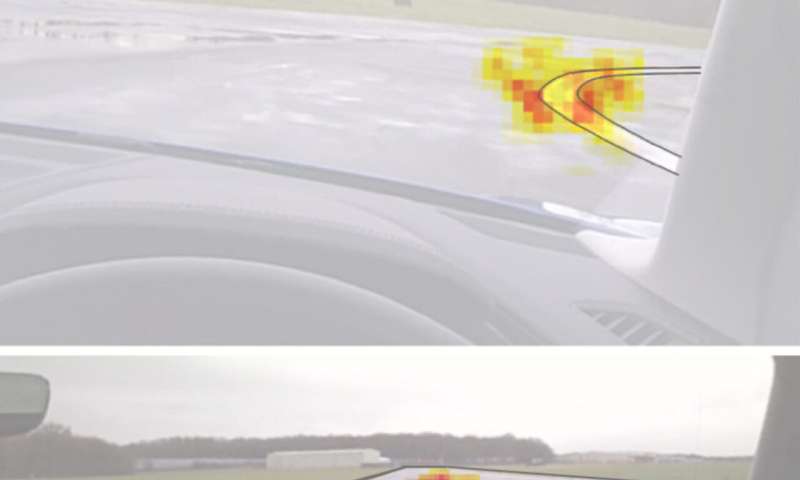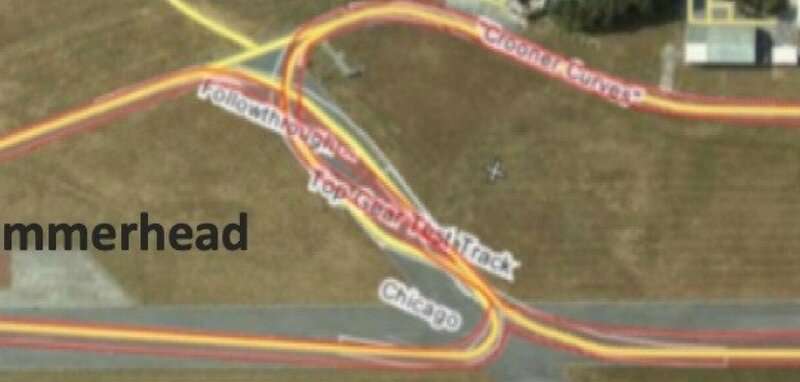Brain waves of Formula E world champion measured on Top Gear race track

For the first time, a new study simultaneously tracks brain activity, eye movements and body movements of a pro race car driver in extreme conditions.
The Imperial College London research team worked with Formula E World Champion Lucas di Grassi to compare how his brain and body reacted to steep curves and straight segments of the Top Gear race track under wet and rainy conditions.
The results, published in Scientific Reports, could help explain how experts in physical tasks have tuned their bodies to react.
This might help us better understand how to improve the human drivers’ performance by distilling the essence of a race car driver’s intuitions, while at the same time helping to develop better artificially intelligent self-driving car technology by capturing and transferring the skills of the human driver into a driving machine.
The study found that di Grassi tended to focus on the horizon and tracking curves when driving steep curves on the track, but that on straight parts he focused on the center of the road.
It also found that levels of alpha and beta brain waves increased while tackling curves, but that delta waves decreased. Increased alpha brain waves are associated with boosted inventiveness and problem-solving complexity, whereas delta waves are associated with human attention.
https://youtube.com/watch?v=blhAGa2HTzA%3Fcolor%3Dwhite
The changes in brain wave activity were correlated with more complex hand movements.
Lead author Dr. Aldo Faisal, of Imperial’s Departments of Bioengineering and Computing said: “Our results suggest correlations between brain waves, body movements, and eye gaze that could shed light on the ways the brain and body interact during expert driving.
“The study demonstrates the feasibility of studying real-world expertise under extreme conditions.”
Di Grassi wore a wireless electroencephalogram (EEG) helmet that tracked his brain wave activity via electrodes. He also wore eye-tracking glasses and inertial measuring units (IMUs) – electronic devices that measure a body’s force, angular rate, and orientation—on his hands and feet.
The car, an Audi R10+, was equipped with cameras and a GPS, and was driven at Dunsfold Aerodrome in Surrey—also known as the Top Gear test track.
Dr. Faisal said: “This study let us have this unique scientific observation of expertise in action. It could pave the way for a greater understanding of world-champion level human skills that we can translate into the next generation of AI.”

He added: “The Top Gear track is specifically designed to test drivers’ reactions to different driving challenges. This research focused on the Hammerhead curve—a particularly challenging curve that was used to really test how di Grassi’s brain and body behaved.”
EEG results are susceptible to noise interference, but the researchers cross-checked their results with previous EEG studies in rifle shooters and found similar results to those in this study.
The researchers hope their results will help to distil data on experts into AI-based self-driving cars and could even help human drivers—a finding that could, in future, also be applied to other types of expertise.
The experimental data collected and analysed here was as part of a promotional video production for Roborace—a racing competition for autonomously driving, electrically powered vehicles.
This research was funded by the EU’s Horizon 2020 programme and the Royal Society.
Source: Read Full Article
